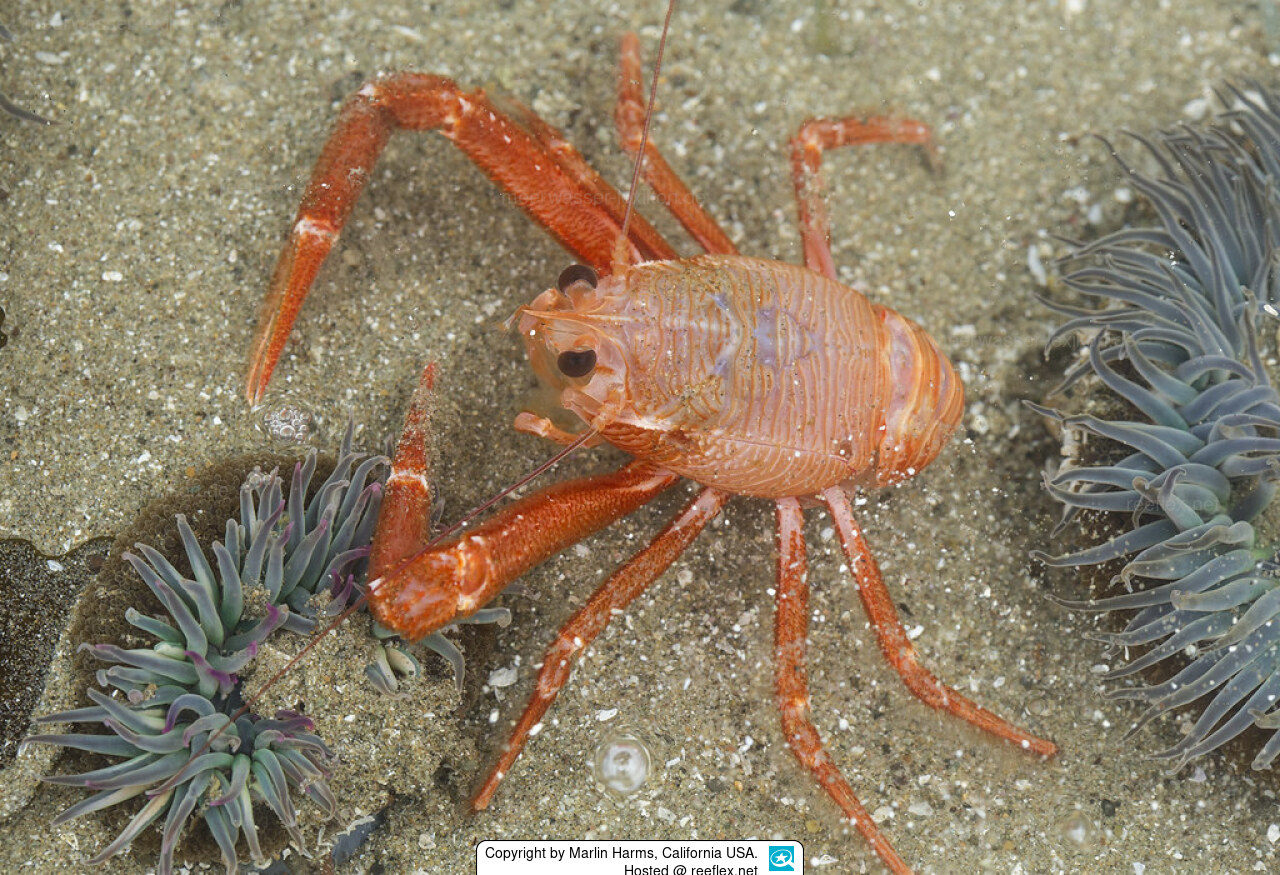Info
Grimothea planipes Stimpson, 1860
Pelagic tuna crabs (Grimothea planipes) are normally found off the Pacific coast of Baja. When they are found in California it is a sure sign that southern water has moved north. They are one to three inches in length, and swim backward by flipping their tails and streamlining their legs. At times they settle to the ocean bottom and hide in holes in the sand. At other times they drift and swim with currents, moving up and down the water column in search of planktonic bits of food that they capture with appendage hairs. They are known to be a food source for the blue whale (Balaenoptera musculus).
They can congegrate in vast swarms, thick enough to color the ocean surface red and washing ashore in great drifts to be mistaken for baby lobsters. Such swarms are often in association with El Nino Southern Oscillation (ENSO) events. Tuna crabs are also a source of food for fish, especially yellowtail and various tuna species, and for rays and pinnipeds as well. At times marine birds gorge so heavily on tuna crabs that they cannot fly!
Source:http://www.oceanlight.com/html/pelagic_tuna_crab.html
Synonymised names
Pleuroncodes planipes Stimpson, 1860 · unaccepted > junior objective synonym
Pelagic tuna crabs (Grimothea planipes) are normally found off the Pacific coast of Baja. When they are found in California it is a sure sign that southern water has moved north. They are one to three inches in length, and swim backward by flipping their tails and streamlining their legs. At times they settle to the ocean bottom and hide in holes in the sand. At other times they drift and swim with currents, moving up and down the water column in search of planktonic bits of food that they capture with appendage hairs. They are known to be a food source for the blue whale (Balaenoptera musculus).
They can congegrate in vast swarms, thick enough to color the ocean surface red and washing ashore in great drifts to be mistaken for baby lobsters. Such swarms are often in association with El Nino Southern Oscillation (ENSO) events. Tuna crabs are also a source of food for fish, especially yellowtail and various tuna species, and for rays and pinnipeds as well. At times marine birds gorge so heavily on tuna crabs that they cannot fly!
Source:http://www.oceanlight.com/html/pelagic_tuna_crab.html
Synonymised names
Pleuroncodes planipes Stimpson, 1860 · unaccepted > junior objective synonym







 Marlin Harms, California USA, California, USA
Marlin Harms, California USA, California, USA









